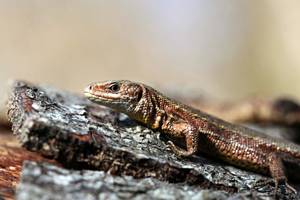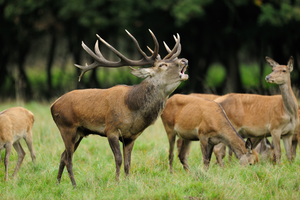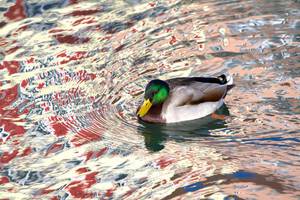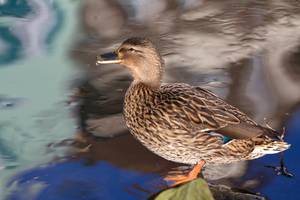Press Releases
12.02.2016
Gender roles due to sexual not social selection
Tübingen evolutionary biologists confirm predictions from Darwin’s theory
Differences between males and females are a general characteristic of the vast majority of animals – be it in terms of behavior, metabolism or morphology. But what are the reasons behind such “typically male” or “typically female” characteristics? Whether gender roles have evolutionary roots – and whether they truly exist at all – has been the subject of heated debate for more than a century. Ines Häderer and Dr. Nils Anthes of Tübingen’s Institute of Evolution and Ecology, working with Dr. Tim Janicke of Montpellier University in France and Dr. Marc Lajeunesse of Tampa University in the USA, have published a study in the latest Science Advances reinforcing the notion that classic gender roles in animals rest on very basic differences between the sexes.
In a comprehensive study covering 66 animal species, the authors compared the differences between the sexes in relation to mating behavior. Across all the species, the researchers found that males usually benefited considerably more than females from a higher number of matings. “In these cases, males are subjected to a stronger selection pressure with regard to the success of mating than females are,” says lead author Tim Janicke. It also became clear that the strength of this difference between the sexes was linked with the development of two further characteristics of sexually reproducing animals: More elaborate display traits in males and an enhanced contribution to parental care by females.
“Our findings reinforce the theory of sexual selection first postulated by Charles Darwin,” says coauthor Ines Häderer. The conventional gender roles described by Darwin are today considered to result from the most fundamental difference between the sexes, namely the size of the gametes. Males usually produce many small sperm cells, while females produce fewer, but usually far larger, egg cells. The males’ large number of tiny sperm promotes increased rivalry for the relatively small number of the females’ egg cells. This is accompanied by the development of conspicuous secondary sexual characteristics for courtship and reduced participation in caring for young.
Under an alternative theory, the development of gender roles is explained by social selection. Supporters of this theory postulate that gender roles arise exclusively from environmental or social influences. “That would mean that gender roles developed independently of the strength of sexual selection and the size of each genders’ germ cells. We didn’t find evidence to support that in our study,” says Häderer.
However, the researchers did find that the gender roles based on the size of gametes could be amplified or reduced by environmental factors. Extreme examples of this are found among birds and fish with reversed sex roles: In these cases, females are subject to stronger sexual selection – they must compete for choosier males – and leave the raising of young largely to the fathers.
Overall, the study supports the predictions of Darwin’s sexual selection theory. It also provides new starting-points for targeted investigations of how environmental and social factors can further define gender roles.
 | In common lizards (Zootoca vivipara), the male – shown here – exhibits more elaborate ornamentation than the female; the latter primarily care for the young. Photo: Jennifer Theobald, deepgreenphoto.com
|
 |
A stag with his herd. Photo: Oliver Krüger |
 |  |
Beautiful plumage: In the mallard duck (Anas platyrhynchos), males (left) have far more elaborate plumage than females (right), who in turn take on the full duty of parental care. Photos: Friedhelm Albrecht/University of Tübingen | |
Publication:
Tim Janicke, Ines K. Haederer, Marc J. Lajeunesse and Nils Anthes: Darwinian sex roles confirmed across the animal kingdom. Science Advances, 2:e1500983 (2016). <link https: dx.doi.org sciadv.1500983>
dx.doi.org/10.1126/sciadv.1500983
Contact:
Dr. Nils Anthes
University of Tübingen
Institute of Evolution and Ecology (EvE)
Phone +49 7071 29-74617
<link>nils.anthes[at]uni-tuebingen.de
